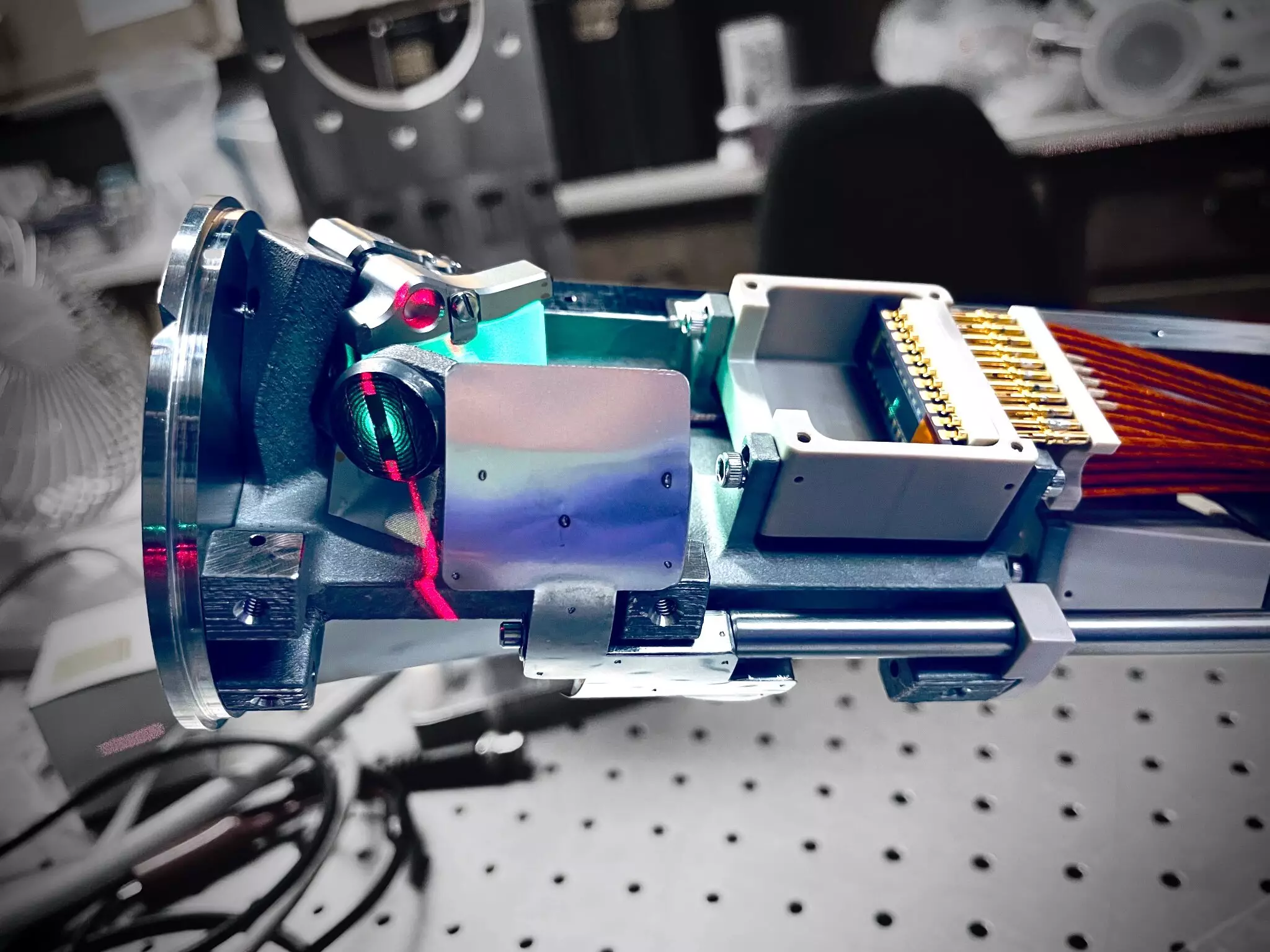Creating heat from fusion reactions is a complex process that requires precise manipulation of plasma, the fourth state of matter. Scientists at the U.S. Department of Energy’s Princeton Plasma Physics Laboratory (PPPL) have recently developed a new plasma measurement instrument called ALPACA. This diagnostic tool has the potential to significantly enhance fusion reactions in tokamaks, thus improving the efficiency of future fusion power plants.
One of the key functions of ALPACA is to observe the light emitted by neutral atoms surrounding the plasma inside DIII-D, a tokamak operated by General Atomics in San Diego. By studying this light, scientists can gather valuable insights into the density of neutral atoms, which is crucial for maintaining the plasma’s heat and increasing the power output of fusion reactions. Understanding the fueling process is essential, as it directly impacts the density of the plasma and, consequently, the efficiency of fusion reactions.
ALPACA functions similarly to a pinhole camera, collecting plasma light at a specific wavelength known as the Lyman-alpha frequency. This allows researchers to calculate the density of neutral atoms by measuring the brightness of the light. Unlike previous diagnostics, ALPACA is specifically designed to capture plasma light at the Lyman-alpha frequency, providing clearer and more accurate data. The ability to control fueling is critical for optimizing fusion reactions in tokamaks and increasing the heat produced by the plasma.
ALPACA is part of a pair of diagnostics, with its counterpart being LLAMA, which observes different regions of the tokamak. Both instruments work together to provide comprehensive data on the distribution of neutral atoms around the plasma. The collaboration between PPPL and institutions like the Massachusetts Institute of Technology highlights the importance of shared knowledge and resources in advancing fusion research.
The design and construction of ALPACA involved innovative techniques, including 3D printing, to create a hollow chamber within the main structural framework. This approach allowed for the integration of cooling conduits, essential for maintaining the instrument’s functionality under extreme conditions. The mechanical engineering aspects of the project presented challenges, but the team was able to overcome them through creativity and collaboration.
ALPACA is currently undergoing testing and will soon be operational at DIII-D. The data collected by this diagnostic tool will play a crucial role in advancing our understanding of plasma behavior and fueling processes. By harnessing the power of fusion reactions, scientists aim to create sustainable and efficient energy sources that could revolutionize the way we produce electricity.
ALPACA represents a significant leap forward in fusion research, offering new insights into plasma properties and fueling mechanisms. Through collaboration and innovation, scientists are paving the way for a future powered by clean and abundant fusion energy.


Leave a Reply
You must be logged in to post a comment.